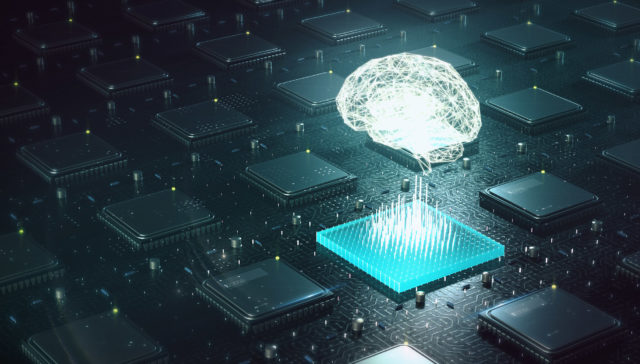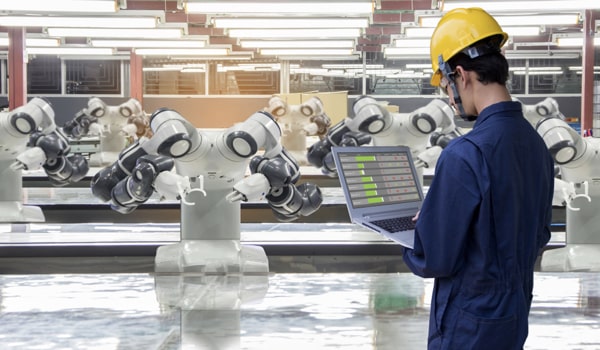In the past few decades the rise of technology is remarkable and growing at rapid speed with something new and unique coming up every now and then that totally surprise us. The term "Technology" is now a very vast concept and changing every moment. You can't predict what's coming up to amaze you this year. Here are the top future technology trends that you will experience in 2019.
1.Artificial Intelligence (AI)
Artificial Intelligence is the buzz word from the last two decades in the technology era.
The AI is developed a lot in the past few years due to the powerful machine learning and deep learning algorithms.
All companies are focusing to harness the power of AI as this is the only medium to be cutting age otherwise it takes no time to become obsolete in the technology world like Nokia and Blackberry.The power of AI is immense and companies are much more serious about it. There are tons of stories on the internet of replacing many employees with AI-based systems and making them redundant.
2. Blockchain
The blockchain is the distributed ledger system. It is the technology behind the Bitcoin or we can say behind all the crypto-currencies. Blockchain saves all the transaction between any two parties in the cryptographically secured blocks of data which are time stamped and mined through the consensus mechanism. All the blocks are linked with each other by a hash pointer which links to the previous block.
3. Internet of Things (IoT)
The IOT devices are connected to the internet continuously and we can detect and collect the data remotely. By the collection of data, we can monitor and analyze the data and made efficient systems and increase productivity.
There are many predictions about the total no connected devices in the world. IHS Markit projects 30.7 billion IoT devices for 2020, and Gartner expects 20.8 billion by that time (excluding smartphones, tablets, and computers). Lastly, IDC anticipates 28.1 billion (again, not counting those devices).
4. Cloud Computing
Cloud computing is the way of accessing the shared computing power by the companies through the Internet. This shared computing is the availability of the storage, servers, databases, software, services and many others through the internet.
In cloud computing the cloud service providers like Microsoft, Amazon, and Google provide the shared resources services to the clients and charge according to the usage. Due to the cloud, there is no need to set up a dedicated server or IT service by the company.
5. Big Data / Data Science
Just like gold mining companies, companies require experts to get the valuable insight and meaning from the huge pile of data which is being generated every second.
These experts are called data scientist or Big Data Scientists as they know the tricks and techniques to make the data meaningful and useful for the corporations so that they can improve their efficiency, productivity, conversion ratio and eventually revenues.
6. Augmented Reality (AR)/ Virtual Reality (VR)
In virtual reality, with the help of computer graphics, we create a real experience. The reality is shown in the virtual world.
On the other hand, augmented reality is the implementation or overlay of the virtual world to the reality.
7. RPA: Robot Process Automation
The automation of the repeated clerical software tasks which are performed in organizations is the simple definition of Robot Process Automation.
Robot process automation as the name defines is the automation of the processes which are repetitive in nature. For example, the simple task of filling up the form by collecting various parameters by the customer's ID cards can be done by RPA very efficiently and effectively.
RPA is based on the AI and Machine learning in which the software records the human workflow and then adapts it to work more efficiently than a human. It automatically learns the processes in the due course of time by deep learning and machine learning algorithms.
RPA will improve the productivity, cycle time and efficiency of the processes and systems.
8. Autonomous Driving (Robot Cars: ROS)
The only name comes to the mind when you listen autonomous driving is Tesla and if you don’t know about the Tesla then you are living in some deserted place.
Tesla made the electric car more stylish and more performance driven than the traditional gasoline cars. Electric cars are now more advanced than traditional gasoline cars in every feature.
9. Cyber Security
The cybersecurity experts act as a guard to protect the silos of data and websites from the hacking.
There is a huge demand for the cybersecurity professionals throughout the world and it will be getting increases as hackers are also becoming more technologically advanced and powerful.
10. Digital Marketing
The digital marketing domain is not new but I want to include this as this domain will be increasing in the coming years and have the potential to employ and impact the major part of the human civilization.
Digital marketing is the use of internet tools and platforms to interact with prospective customers and pursue them to buy product and services.
As more and more business and people are going online there is a need for the digital marketing experts in the technology space.
11. 5G Technology
5G technology will also be counted among the top business tech trends for 2019. It will provide us with unparalleled speed of data transfer and widespread range, which will help the businesses offer effective services to their customers and workforce.
12. Cryptocurrency
After Bitcoin’s meteoric price jump in 2017, major tech players have begun to take cryptocurrencies seriously. Along with major Initial Coin Offerings that have hit major news outlets like Ethereum, smaller companies are developing Stable coins that provide attempt to provide all the pros of cryptocurrency transactions without the price fluctuations that have plagued the system. As these coins begin to work themselves out and exchanges even out the fluctuations in prices, expect these assets to be mainstream methods of payment by 2020.
13. Interactive Product Visualization
Most would agree that, when it comes to online shopping, illuminating visualization is the best way for merchants and marketers to present their products to consumers so that they can study every detail and make an informed purchase decision without regretting it afterwards.
Consequently, the seamless zoom feature has become very popular lately, as it allows customers to zoom in on certain details and to get a better feel for the product without actually touching it.
To enhance the online shopping experience, merchants can also consider using demo videos to show products in action. According to Invodo Reports, 52% of consumers say that watching product videos makes them more confident in online purchase decisions.
3D imaging is another option, since, according to the Cappasity research, 95 percent of respondents prefer an interactive 3D representation to video playback.
It’s only recently that current 3D technologies have advanced enough to be able to process product features that not so long ago were considered out of reach: black, shiny, and glossy objects such as silks, leathers and jewelry items, anything transparent, unusually shaped or textured, all that is now no obstacle.
Increased customer engagement is not the only benefit of 3D product imaging, as it also boosts metrics that are far more tangible, with conversion rate being a prime example.
With 3D product imaging, TSUM, one of the largest luxury goods department stores in Eastern Europe, managed to increase its conversion rate by almost 40% for products in the shoes and bags categories. TSUM is the first company to have digitized over 40,000 products in 3D.
14. Voice Technology
With half of the world giving commands to Alexa, Siri and Google Now to get their work done, Voice technology will rule the market. It will become a necessity of the businesses to integrate this technology into their processes to create a seamless and effective experience
15. 3D Metal Printing
Now, 3D metal printing is poised to be the next big wave in this industry.HP is planning its first offering, the Jet Fusion model, which it hopes will make a difference in the metal parts manufacturing sector. Other industry giants are also on board: GE has been printing metal fuel nozzles for its Leap jet engines, and Nike’s even printing metal cleats.
Looking to more delicate products, 3D metal printing is uniquely beneficial to toy and jewelry businesses. With a 3D printer, a massive factory is no longer needed to create beautiful pieces for small or medium-size businesses — and that will change the competitive landscape.
The future of technology is unpredictable and uncertain. The evolution attached to it is rapid and changes the way we think. One thing is for sure and that is technology is the future.
















No comments:
Post a Comment